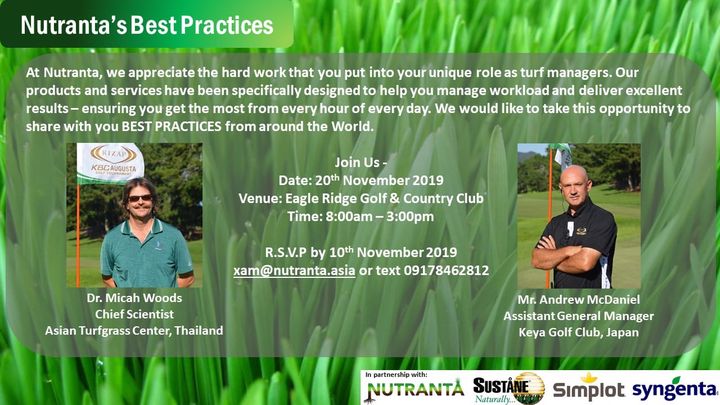A continuous improvement system for turfgrass

I’ll be at Nutranta’s Best Practices seminar on 20 November to talk about soil nutrient and soil organic matter testing.
I’m not sure the exact title I’ll use, maybe Turf nutrition and soil organic matter: continuous improvement through testing or A system to get better conditions year after year or The inevitable consequences of regular rootzone measurements. Here’s the summary:
Regular measurement of soil nutrient and soil organic matter content allows turfgrass managers to adjust the nutrient supply and the organic matter management—sand topdressing, cultivation, and verticutting. These adjustments, when implemented, cause two inevitable results. One is improved turfgrass conditions. This comes from eliminating nutrient deficiencies, supplying the turf with all the nutrients required, and adjusting the soil organic matter for improved playability. The second inevitable result is improved work efficiency. Applying nutrients and sand and thatch control treatments only when there is a confirmed requirement for them elimates wasted applications and unnecessary work. Basing the work on regular measurements will also identify when extra work or applications are required. These inevitable consequences result in a continuous improvement system for turfgrass management.
I should note that the inevitable results of improved conditions and better efficiency only happen when one interprets the measurements correctly. I will, of course, be discussing how to make an optimal interpretation of results in the seminar.
See That’s not the way it is supposed to work for a discussion of soil test interpretation. I’ve discussed organic matter measurement in my series of #OM246 blog posts.